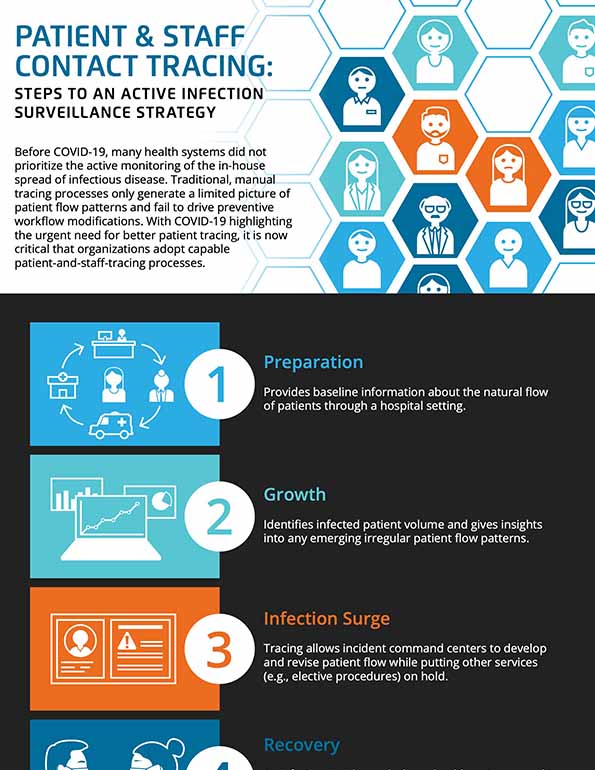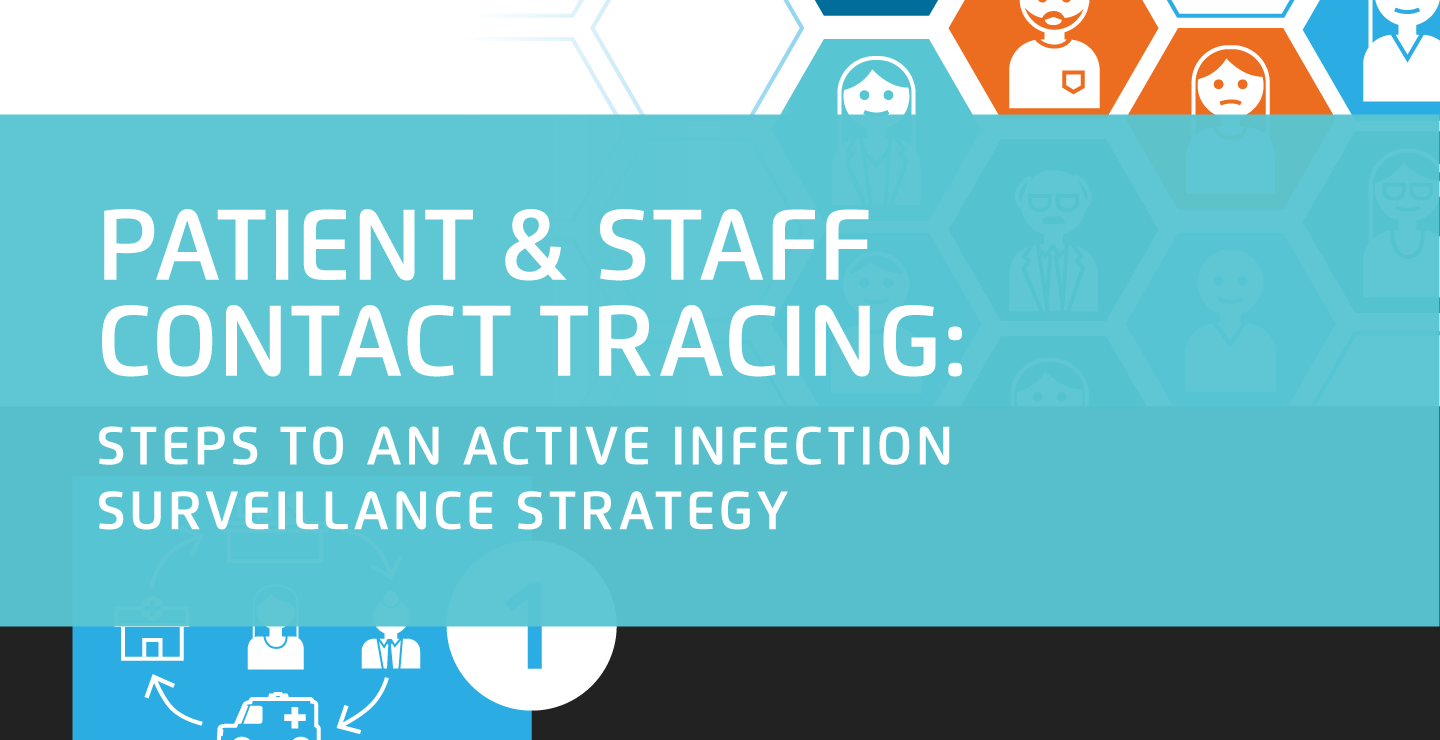While the world waits for a vaccine or effective treatment for COVID-19, managing disease spread is paramount. For health systems, patient and staff contact tracing is one of the top transmission-control strategies.
Because the virus appears to spread mainly through respiratory droplets from person-to-person contact, knowing where infected individuals have been and with whom they’ve been in contact is an essential capability.
With this insight, organizations can manage transmission with data-driven emergency planning and monitoring capabilities. The resulting appropriate and timely workflow modifications will serve disease control efforts during the 2020 pandemic and help health systems prepare for future outbreaks.



As the novel coronavirus spreads rapidly through communities and until a vaccine or effective treatment is available, preventing disease transmission is likely the best management strategy. Because the virus that causes COVID-19 (SARS-CoV-2) appears to spread mainly through respiratory droplets from person-to-person contact (e.g., coughs, sneezes, or speech), knowing where infected patients have been and with whom they’ve been in contact is vital.
Contact tracing follows COVID-19-confirmed patients through the health system, informing surveillance teams where patients have been in the facility and with which staff members they’ve interacted. These vital insights support transmission management by informing testing, quarantine efforts, and decontamination activities.
Before COVID-19, many health systems did not prioritize the active monitoring of the in-house spread of infectious disease. While paper-based, manual tracing processes have been the norm, they generate only a limited picture of the natural patient flow patterns across hospital departments and fail to drive preventive workflow modifications. Now with COVID-19 making the need for better patient tracing urgent, organizations must adopt capable patient and staff contact tracing processes.
Contact tracing aligns existing patient flow data (from manual tracking) with indicators of potential staff exposure from the clinical record, such as which parts of the facility the patient entered and the types of treatments or testing they underwent.
These rich insights into the patient journey help organizations plan their strategy as they progress through the following phases:
To fulfill the above critical COVID-19 contact tracing roles, Health Catalyst created the Patient and Staff Tracker early in the course of the 2020 pandemic. The tracker provides analytic insights surrounding patient movement and interactions between staff and patients with either a confirmed or suspected infection. These data can then encourage informed, data-driven, and timely action.
The first step of contact tracing is to identify the initial population of infected individuals. Health Catalyst leverages cohort discovery tools, such as its Population Builder™, to allow searches for patients according to customizable criteria. Users can identify an initial population, typically from diagnostic testing or diagnosis codes, then enrich the results with additional data, including the following:
Once patient tracing insights are available, dashboards provide visualizations to inform infection prevention teams, incident command leadership, infectious disease experts, hospital unit leaders, employee health, and risk management departments.
COVID-19 response teams can then leverage tracing data to drive actionable insights. The following questions can inform these insights:
How organizations fold contact tracing into their exposure investigation efforts depends on the unique needs of the specific hospital and the community it supports. Some sites may choose to integrate exposure monitoring into outpatient case management workflows for uniquely at-risk individuals. If detailed transfer data from outside facilities are available, including it in the contact tracing data strategy might lessen both exposure risk and unnecessary testing.
Additionally, contact tracing can help employee health departments at health systems understand whether infected staff members were possibly exposed at work, as their treatment may become a workers’ compensation claim. And risk management teams may want to conduct risk assessment activities on potentially exposed patients and staff and collect more in-depth data regarding personal protective equipment usage or perceived exposure length of time.
As the long-term impact of many of the COVID-19 treatment protocols remains unknown, aspects of the patient experience captured within contact tracing can support ongoing preparation. By revealing the most common pathways through hospital departments for different care episodes, contact tracing feeds forecasting methods, allowing organizations to scale their disaster planning approaches by outbreak severity. Tracing insights might also inspire workflow efficiencies to limit future exposure risk, and aspects of the contact tracing data, such as how long an infected patient spends in a department, may have meaningful relationships to lifelong outcomes.
COVID-19 is not likely the last infectious disease crisis the U.S. health system faces, and there’s no known end to the current pandemic. Some models suggest the need for rolling lockdown periods while the outbreak fluctuates seasonally. For organizations committed to continuous improvement, historical contact data will be invaluable to future disaster planning efforts.
While patient-staff contact tracing is a focus for the current COVID-19 pandemic, health systems can use many of the same strategies to prepare for future outbreaks with the potential for similar capacity strains. Organizations must strengthen their data-driven emergency planning and monitoring capability to react in an appropriate, efficient, and timely manner. For many organizations, COVID-19 has highlighted gaps in their patient flow data strategy. Looking towards contact tracing using existing data sources is a meaningful first step in growing an active infection surveillance strategy.
Would you like to learn more about this topic? Here are some articles we suggest:
Would you like to use or share these concepts? Download the presentation highlighting the key main points.
Click Here to Download the Slides
https://www.slideshare.net/healthcatalyst1/steps-for-effective-patient-and-staff-contact-tracing-to-defend-against-covid19-spread